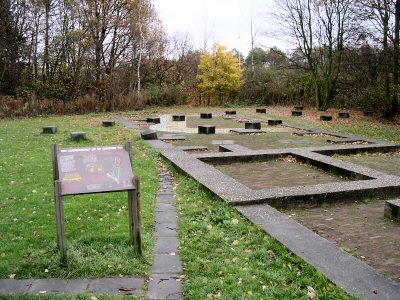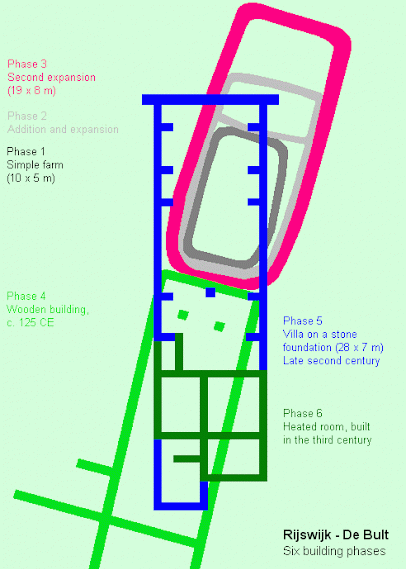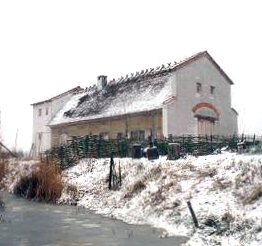Rijswijk - De Bult
Q33475563Rijswijk - De Bult: site of ancient farm, not far from modern The Hague in the Netherlands.

At Rijswijk, a southeastern suburb of the modern city of The Hague, the remains of an ancient farm were excavated at a site called De Bult ("the little mound"). The archaeologists were able to identify several consecutive building stages, which today's visitor can see indicated with different kinds of paving stones.
The farm, built by a Cananefatian family, was originally constructed from wood in c.25 CE. The inhabitants lived close to the main town of their tribe, Voorburg, or, as it was called back then, Municipium Cananefatum.

This must have been the place where the farmers sold the products they had produced. However, the farm was also close to a small river, the Gantel, which gave the farmer direct access to the estuary of the Waal and Meuse. The sea was not too far to the west, and the inhabitants of the farm must have been able to add fish to their menu.
The first building at De Bult may have been a smaller version of the reconstructed Iron Age farm, originally at Ezinge in the northern part of the Dutch coastal area, that was reconstructed in the Archeon archaeological park in Alphen aan de Rijn. It was built along an east-west axis.

The Rijswijk farm was expanded twice. The original building had measured measured 9½ x 5 m; it is dark gray on the map. The first reconstruction consisted of an expansion and the addition of a new room; now, the building measured 13 x 6½ m. It is shown in light gray. The next building phase, the third one, indicated in red, was an entirely new building that measured 19 x 8 meters. The east-west axis was maintained.
In c.125, the farm was rebuilt in a more Roman, square fashion. Still along the same axis and still made of wood, it measured 20 x 6 meters (light green). This phase may have been connected to the visit of the emperor Hadrian to the area, which is believed - but perhaps on erroneous ground - to have resulted in a renewal of the nearby town. From now on, it was called Forum Hadriani, "the market of Hadrian".

In the second half of the second century, a real Roman villa was constructed (28 x 7 meters; blue; the fifth building phase), to which a room with pavement and heating was added in the third century (dark green). It had a slightly different orientation. The final picture, another reconstruction at the Archeon, shows what it must have looked in the mid-third century.
Like nearby Voorburg, the villa at Rijswijk - De Bult was abandoned in c.275. Until the twentieth century, its ruin remained recognizable as a small hill, whence it was called, as we have already noted, "De Bult" (little mound).